Eric's Insight: What’s behind Yunnan’s expanded circle of international friends
The 2024 China International Friendship Cities Conference (CIFCC) concluded in central Yunnan's Kunming city on November 19. The event welcomed approximately 700 representatives from over 120 cities and 60 government or friendship organizations across 41 countries. The expanded circle of international friends is driven by Yunnan’s natural beauty, cultural inclusivity, and the province’s initiatives promoting openness.
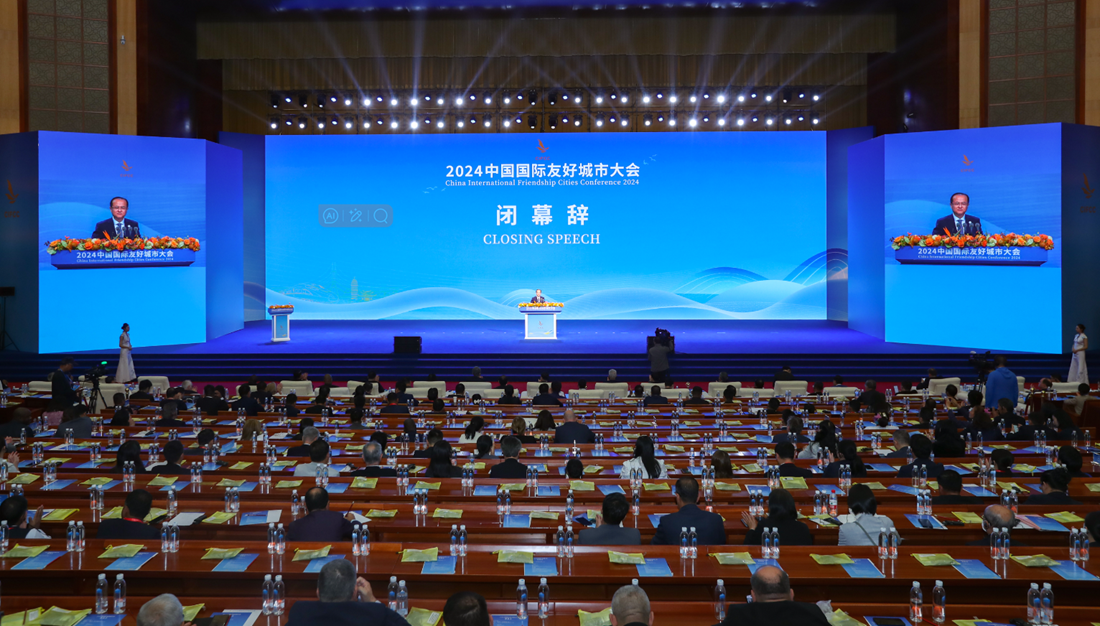
The 2024 China International Friendship Cities Conference (CIFCC) closes in central Yunnan's Kunming city on November 19.
Natural beauty
Yunnan is often referred to as the "plant kingdom," the "animal kingdom", and the "world’s garden", with its natural beauty captivating international friends. Over 700 years ago, Italian explorer Marco Polo (1254-1324), who spent 17 years in China, visited the beautiful Dianchi Lake in central Yunnan. He praised Kunming, the lakeside city, as "a magnificent city".
Approximately 380 years ago, the renowned Chinese traveler Xu Xiake (1587-1641) embarked on his Yunnan journey in a pair of plain shoes. Xu spent more than 630 days traveling across Yunnan, covering 50 counties across 10 prefectures and cities today. His travel notes on the province totaled 250,000 Chinese characters, accounting for 40 percent of Xu Xiake's Travel Notes. Xu dedicated approximately 30,000 Chinese characters to his account of Tengchong in western Yunnan.
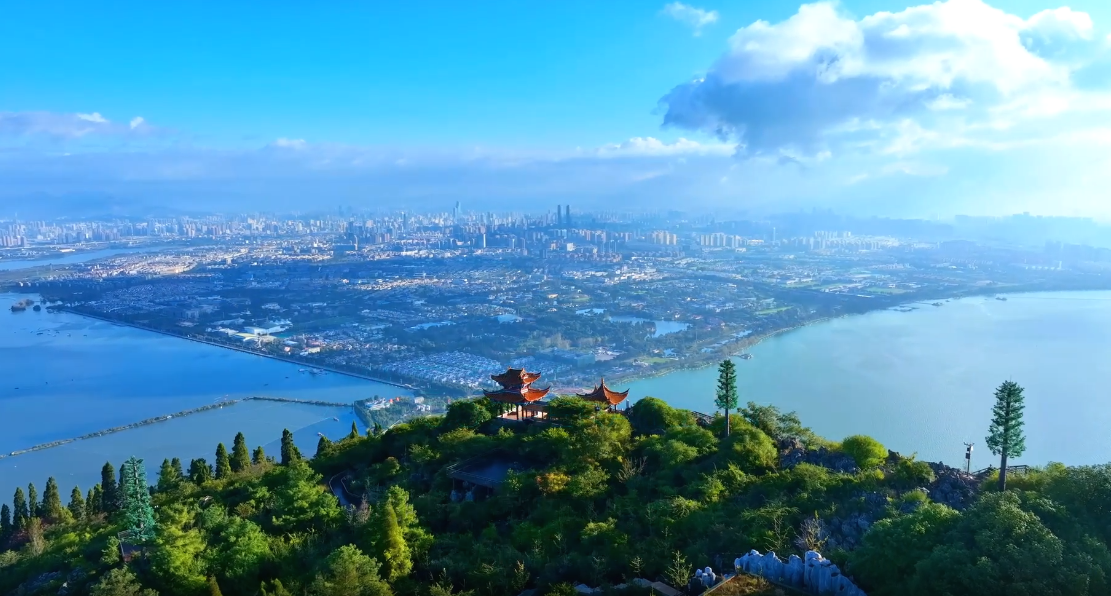
A birdview of central Yunnan's Kunming city
Among the Chinese provinces, Xu dedicated the most time to exploring Yunnan because of its natural beauty. By capturing the lovely hills, rivers, lakes, flowers, birds and animals in his travel notes, Xu served as a trailblazer in the exploration of natural beauty. Xu helped increase the province's global recognition, and the beautiful Yunnan has since become a sought-after destination for global travelers.
Later, Austrian-American explorer Joseph Rock (1884-1962), spent nearly three decades exploring throughout southwest China, with a particular focus on Yunnan province. Upon arriving in northwest Yunnan in 1922, he took pictures for the US-based National Geographic magazine, revealing the province's stunning landscapes and unique folk customs to the world.
The ancient international explorers laid the foundation for Yunnan’s circle of international friends. Today, Shangri-La city in the northwest of Yunnan province is an increasingly appealing tourist destination. It offers a serene escape from the bustling city life where visitors can find inner peace in the snow-capped peaks.
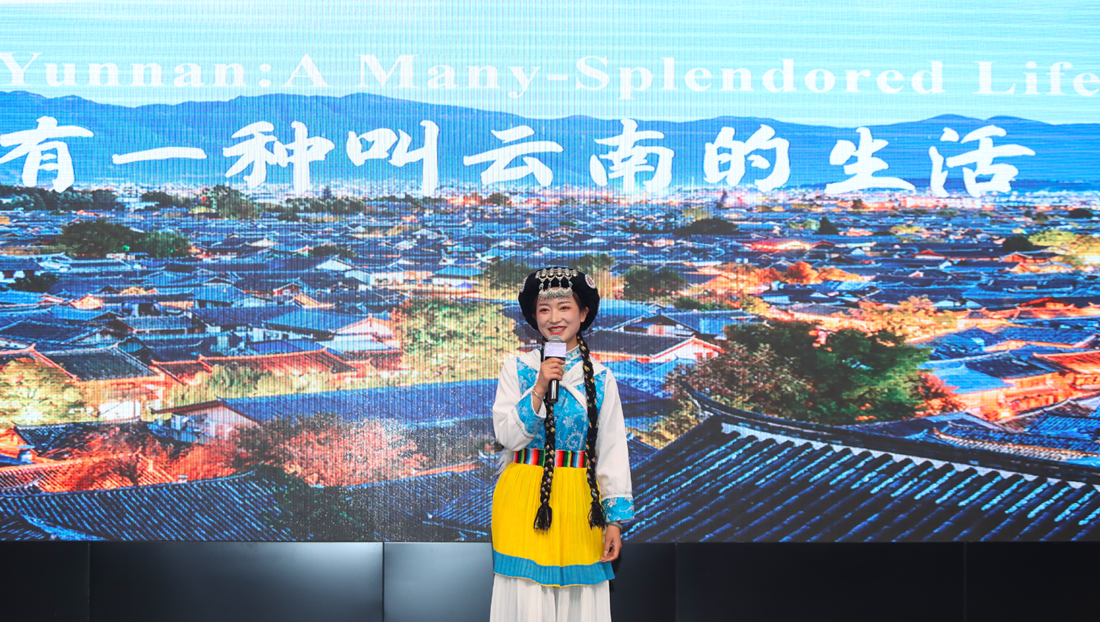
A Yunnan tour guide invites global tourists to the province for a many-splendored life during the conference.
Cultural inclusiveness
Cultural inclusiveness contributed to Yunnan’s circle of international friends. Yunnan is home to different religious communities, who, despite their differences, often live together in harmony, as one family under the same roof. Buddhists and Muslims live in harmony and happiness in the province. Among Buddhists, the Hinayana believers mostly live in Dehong, Lincang and Xishuangbanna, the Tibetan Buddhists mostly practice in Diqing, while the Mahayana believers are spread across Yunnan.
In the late 14th century A.D., a group of Japanese Buddhists came to China as emissaries, and the Ming government settled them in Shaanxi, Sichuan and Yunnan. During this period, several Japanese monks lived in Yunnan, including Jixian, Tianxiang, Dounan, Zongling and others. Among them, Jixian and Tianxiang could even compose Chinese poems to praise the scenic beauty of Dianchi and Erhai lakes, laying the foundation for future Yunnan-Japan cultural exchanges.
In 1935, Yunnan musician Nie Er, renowned for composing the Chinese national anthem "March of the Volunteers", traveled to Japan to revise the anthem. While in Japan, he also learned Japanese, practiced the piano, and immersed himself in local dramas and movies. Within just over two months, Nie Er was able to communicate in Japanese. In November 1981, Kunming, in central Yunnan, established a sister-city relation with the Japanese city of Fujisawa, marking the beginning of Yunnan's initiative in international sister cities.
Another aspect of Yunnan’s cultural inclusiveness lies in its diverse ethnic cultures. After Rock settled down in northwest Yunnan, he became interested in the Dongba culture of the indigenous Naxi people. Rock stayed in Lijiang and Diqing, where the city of Shangri-La is located today, until 1949. During his time there, he took thousands of precious photographs, collected more than 8,000 Dongba scriptures, and authored 18 books on the Naxi ethnic group.
American city Denver and Kunming, in Yunnan, were formally established as international sister cities in May 1986. Over the past 30 years, there have been frequent high-level visits and cultural exchanges between the two cities. Currently, Brian Linden, an American, serves as the head of a village in Yunnan’s Dali Bai autonomous prefecture, and a Yunnan folk house that incorporates diverse ethnic architecture elements has found its way to the American state of Virginia.
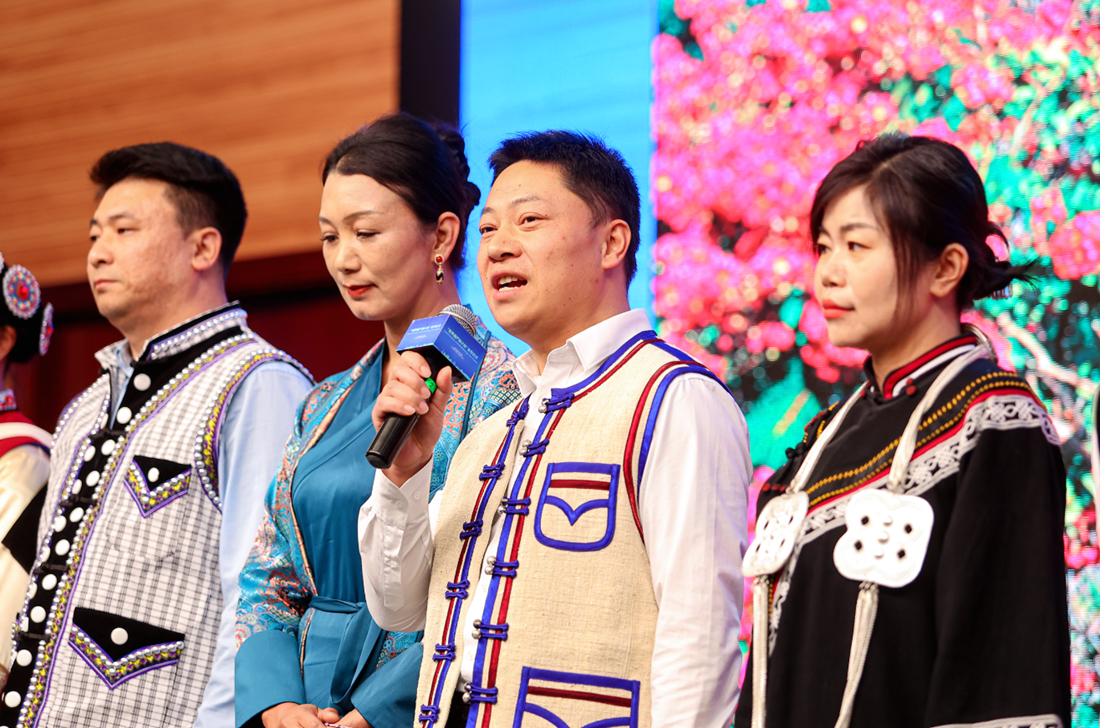
Representatives of Yunnan ethnic groups invite global tourists to the province's World Heritage sites.
Provincial actions for opening-up
Provincial initiatives to promote openness have significantly broadened Yunnan’s circle of international friends. Historically, Yunnan has always embodied the spirit of openness. The province has been a key hub on the Southern Silk Road since ancient times, serving as the Chinese gateway to the south-southeast Asian countries and beyond.
Over 600 years ago, Zheng He, a renowned navigator born in Yunnan, undertook seven voyages to the Western Ocean, today’s Indian Ocean, and wrote a timeless legacy of peaceful exchanges between ancient China and other countries. Over a century ago, China's first international railway, the Yunnan-Vietnam Railway, reached central Yunnan’s Kunming, bringing in Westerners and their lifestyles.
Since assuming office in 2012, Chinese President Xi Jinping visited Yunnan twice, in 2015 and in 2020. During these visits, he designated the province as a new focal point for China’s opening-up strategy towards south and southeast Asia and expected Yunnan to make new progress in this regard. Following these visits, the province has been working hard to fulfill its expected role as China’s new hub for opening-up.
Today, facilities such as the Kunming Changshui International Airport, the international passenger trains on China-Laos Railway, the Siem Reap Angkor International Airport and other transport facilities are attracting an increasing number of international friends to Yunnan. These visitors come to attend events such as the China-South Asia Expo, the China International Travel Mart, the SCO Kunming Marathon, and other platforms for regional economic cooperation and people-to-people exchanges.
To date, cities across Yunnan province have partnered with counterparts in 37 countries across five continents, establishing 112 pairs of international sister cities. At the 2024 CIFCC, the international friendship awards were presented to 50 provinces and cities of China along with other 39 countries. Additionally, eight agreements for new friendship partnerships were signed, together with the cooperative memorandum of China-Laos Railway cities network. These will further expand Yunnan’s circle of international friends.
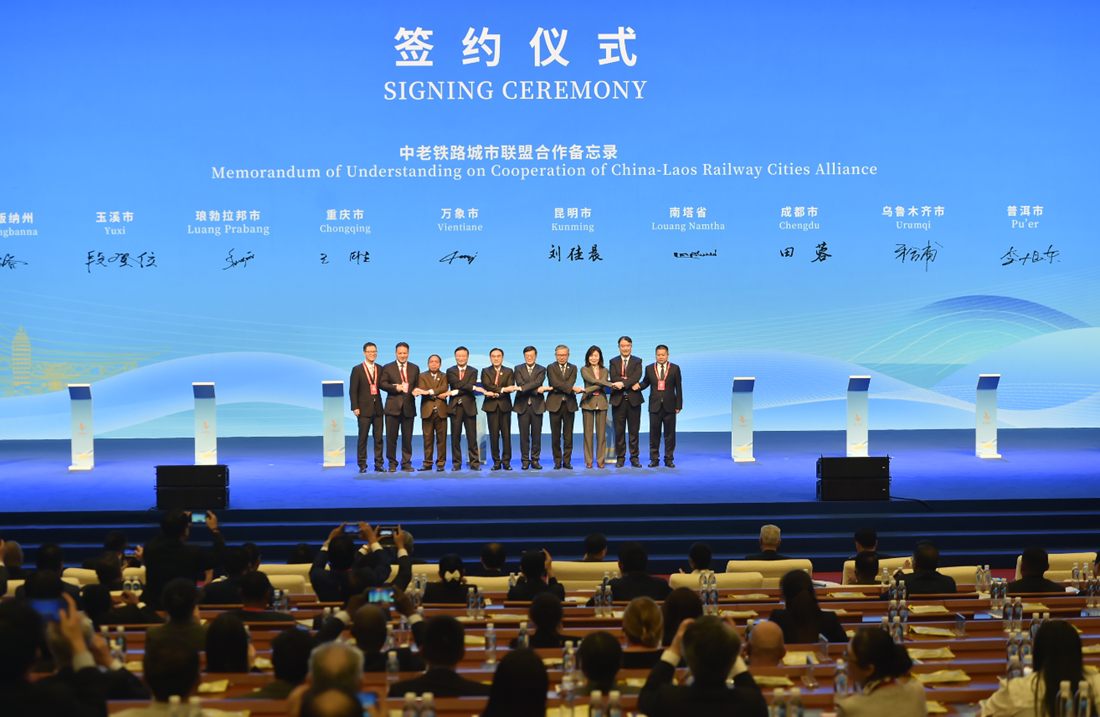
A cooperative MoU of the China-Laos Railway cities network is signed at the conference closing.
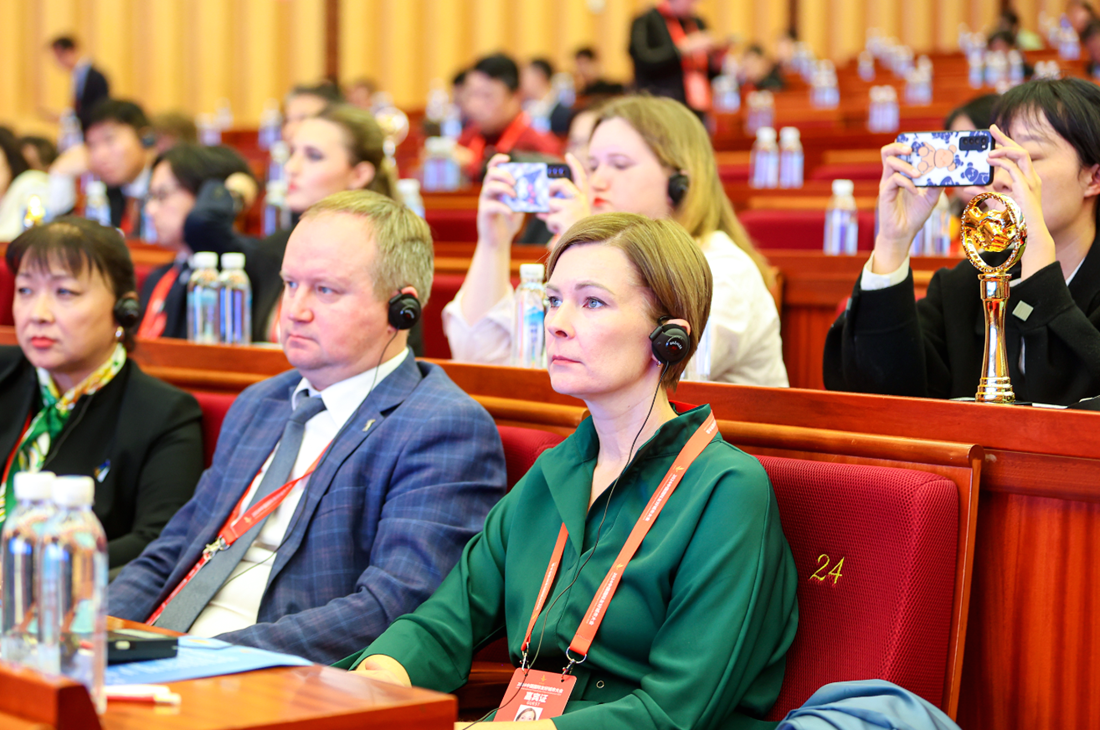
International friends attend the conference closing.
Writing by Wang Shixue; Photos by Yunnan Daily; Proofreading by Zu Hongbing and Wang Huan; English language polishing by China International Communication Group